Want to learn more about Rhode Island? Here are 12 spots to learn about Indigenous culture
Rhode Island may be a tiny state, but it holds a boundless history.
Before European colonization, Rhode Island was predominantly made up of five Indigenous tribes — Narragansett, Pequot, Wampanoag, Nipmuc and Niantic. Now, the state remains a center of Indigenous history and heritage — culture that refuses to be erased.
The Providence Journal researched every recorded Indigenous landmark, museum and monument in the state to compile an inclusive list of opportunities for Rhode Islanders to immerse themselves in local Indigenous history and learn more about the origins of the land we live on today. From the perspective shared by the assistant director of the Tomaquag Museum, Silvermoon LaRose, to data visualizations mapping these venerated sites across the state, we’ve got you covered for your next deep dive into Indigenous history in the Ocean State.
Canonchet Memorial
Location: Corner of Beach Street and Ocean Road, Narragansett
At the corner of Beach Street and Ocean Road sits a 6,000-pound limestone statue of historical Narragansett Chief Canonchet. During King Philip’s War in 1675, Canonchet led his people in their defense against New England Colonists who were forcing them off their own land. Canonchet is remembered as a courageous and honorable chief who survived the atrocities of displacement, disenfranchisement and genocide, all while fighting nobly to protect his tribe. Located in the Gazebo Park of Canonchet Farm, the Canonchet Memorial stands as a reminder of Indigenous bravery and legacy.
Great Swamp Monument
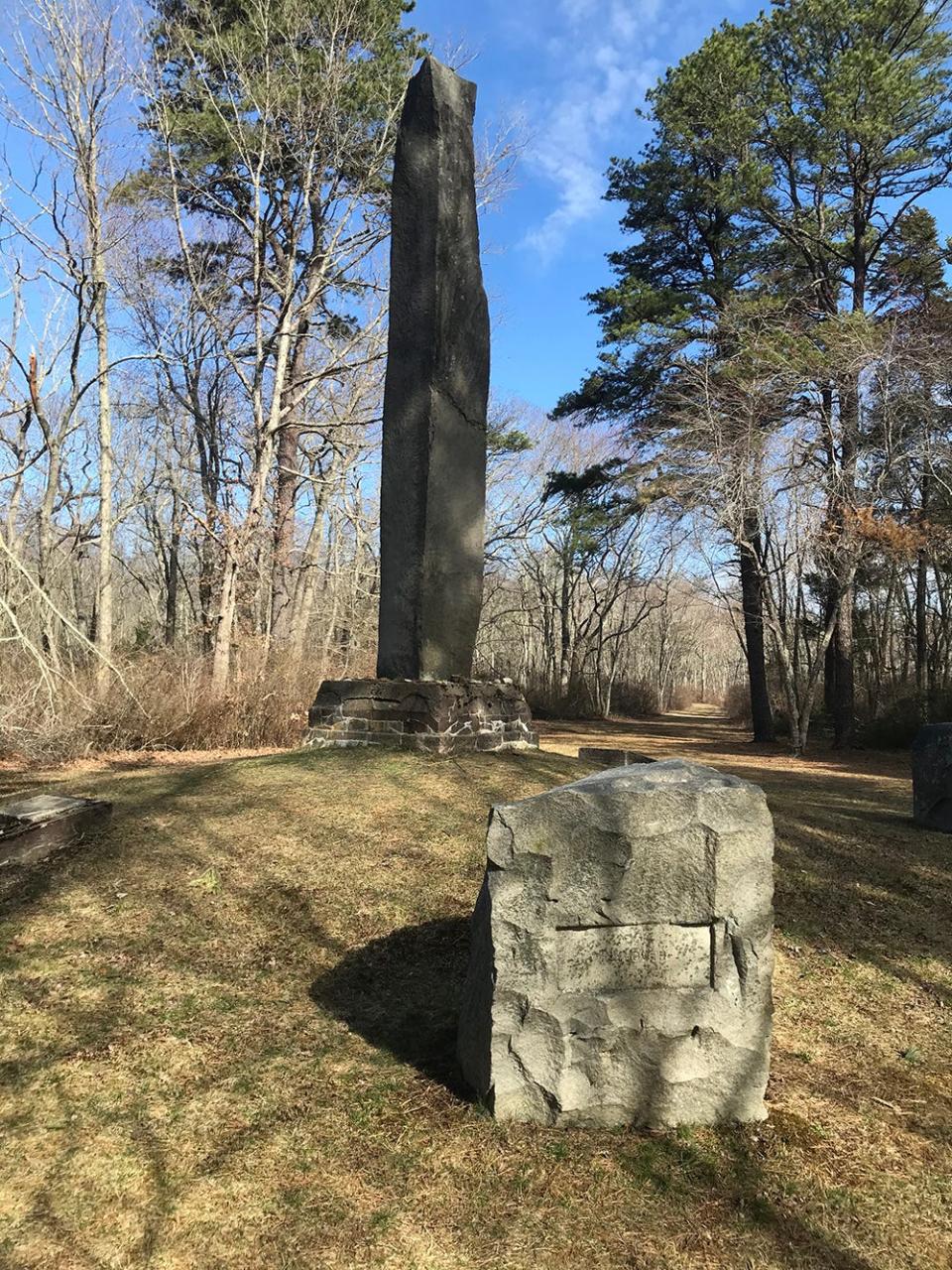
Location: Route 2, West Kingston, South Kingstown
Just steps off a South Kingston hiking trail stands a tribute to the violence committed against the Narragansett tribe during the Great Swamp Fight in 1675. The Rhode Island Historical Society estimates between 300-600 Narragansett lives were lost in this gruesome battle during King Philip’s War. Today, an obelisk honors the lives lost.
Narragansett Indian Monument
Location: Kingstown Road and Strathmore Street, Narragansett
Standing 23 feet tall, this wooden sculpture of a Narragansett man was carved from a single Douglas fir tree in 1982. The sturdy stonework base the sculpture stands on is the work of Narragansett tribal members themselves, setting this monument apart as a work of art including, honoring and respecting the heritage of the tribe it represents.
Pettaquamscutt Rock
Location: 640 Middlebridge Road, South Kingstown, RI 02879
Colloquially known as “Treaty Rock,” the Pettaquamscutt Rock is off a trail at the heart of South Kingstown. Known for being a site of business between the Narragansett tribe and Colonists, Pettaquamscutt Rock marks the site of Roger Williams’ purchase of what we now know as Providence and Aquidneck, Rhode Island. A popular site for rock climbing, hiking and learning alike, Pettaquamscutt Rock has plenty to offer for visitors looking to explore local history while getting active.
Royal Indian Burial Ground
Location: Pow Wow Road, Charlestown
If you can make it up the steep, winding road leading to the top of this Charlestown hill, you’ll find a small cemetery marked by a modest cobblestone wall. But those resting in this burial ground are anything but small — they’re legendary Narragansett sachems and their family members. About 20 feet wide and 100 feet long, the Royal Indian Burial Ground is a small plot of land with an immeasurable significance.
Sowams Heritage Area Tours
Location: 23 Bridge St., Warren
The Sowams Heritage Area Tours offer a unique guide across 50 locations that document the transition of Indigenous land into Colonial territory. These tours are available in Providence, East Providence, Barrington, Warren and Bristol, Rhode Island, and information can be found on the Sowams Heritage Area website. On top of various photos, maps and videos, Sowams Heritage Area also offers 10 self-guided tours, from cemeteries to landmarks and other historical locations.
Sly Fox Den Too
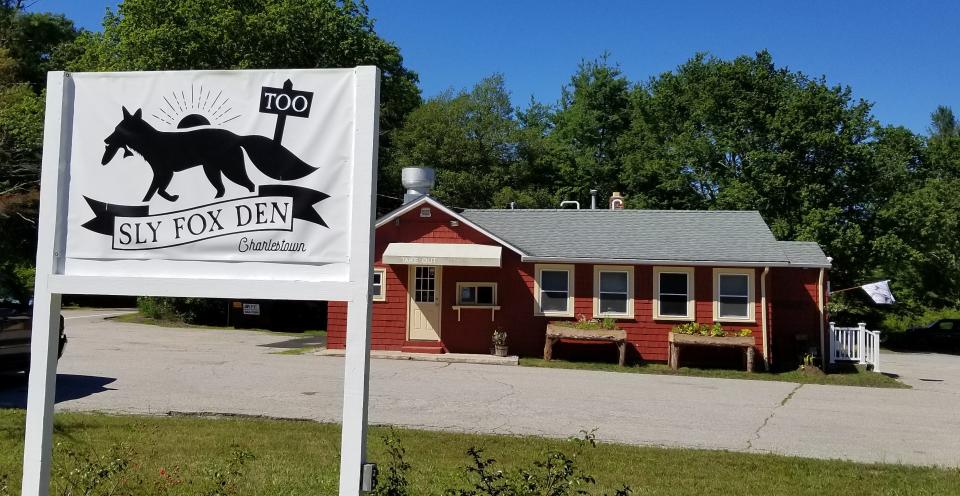
Location: 4349 South County Trail, Charlestown
If you’re interested in sampling traditional Northeast Indigenous food somewhere local, look no farther than Sly Fox Den Too. A quaint restaurant in Charlestown, Rhode Island, Sly Fox Den Too offers an expansive menu with Indigenous meals for people of all eating preferences — yes, they have vegan selections too. Prepared by Mashpee Wampanoag chef Sherry Pocknett, this year's winner of the Best Chef Northeast Award from the James Beard Foundation, Sly Fox Den Too is a family-friendly, accessible restaurant dedicated to welcoming customers into the wide world of specialized Indigenous cuisine.
More: RI chef makes history winning James Beard award
Tomaquag Museum
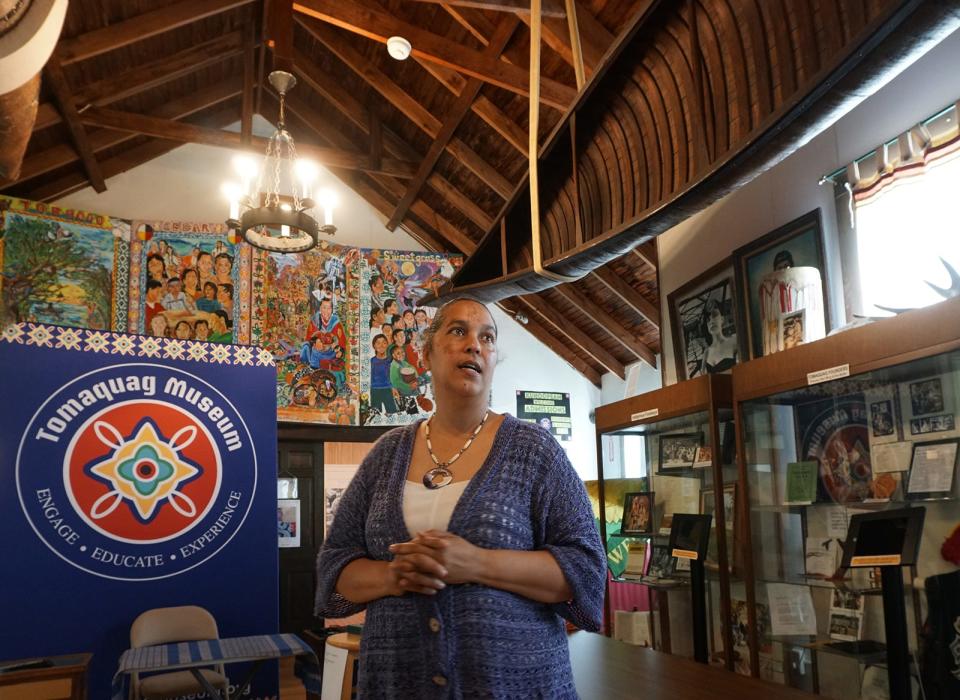
Location: 390A Summit Road, Exeter
One of the oldest tribal museums in the country, the Tomaquag Museum offers an immersive experience, with information and exhibits highlighting Southern New England Indigenous traditions, heritage, history and culture. According to its website, the museum’s mission is to educate the public on Indigenous cultures “through engagement and shared dialogue to reconcile the past and empower present and future generations.” The museum hopes visitors will “recognize and understand the impact of conquest and colonization” and “take action to create equity.” Assistant director Silvermoon LaRose said all educators at the Tomaquag Museum are Indigenous people “offering a first-person perspective on our history and culture.”
“Every visitor to the museum is offered a highlights tour by one of our educators to deepen their understanding of the cultural belongings we care for and exhibit at the museum,” she said. “They are also available to answer any questions you may have or help you access resources to further your learning.”
“Additionally, if you are unable to come to the museum, we offer visiting museum educator services, where our programming can come to you,” LaRose added. “We have an incredible, diverse staff that works as a team to preserve and share history and culture in an accessible and inclusive manner."
'Still Here' mural
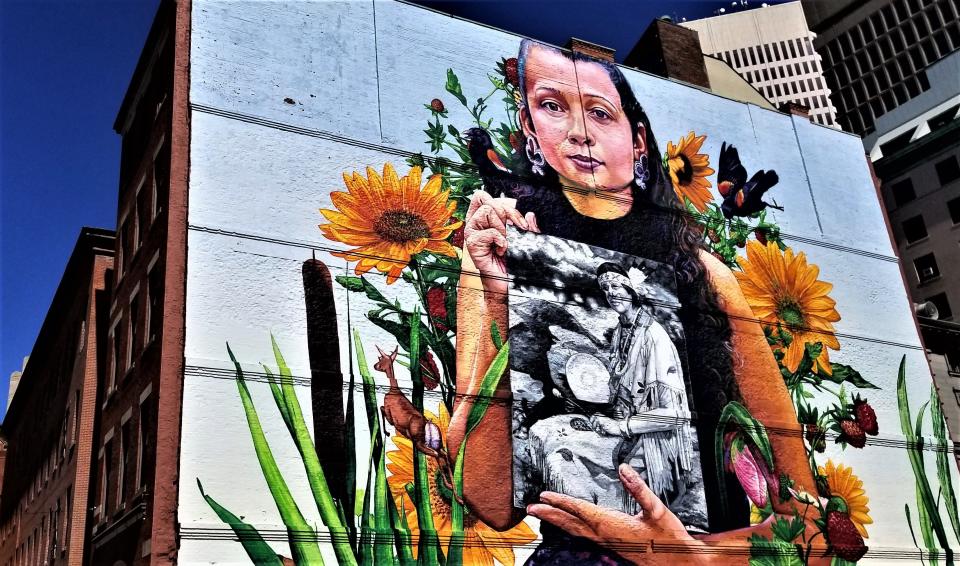
Location: 32 Custom House St., Providence
On the east-facing wall of 32 Custom House St. in downtown Providence, near the Providence River, you will see a tall painting of a woman sitting with sunflowers and a picture frame in hand looking back at you. This is a portrait of local Indigenous activist Lynsea Montanari called the "Still Here" mural. Painted by Baltimore-based muralist Gaia, the mural in the heart of Rhode Island’s capital serves as a reminder to all that Indigenous presence and history in the state is still here and unerasable.
Pokanoket Burial Ground
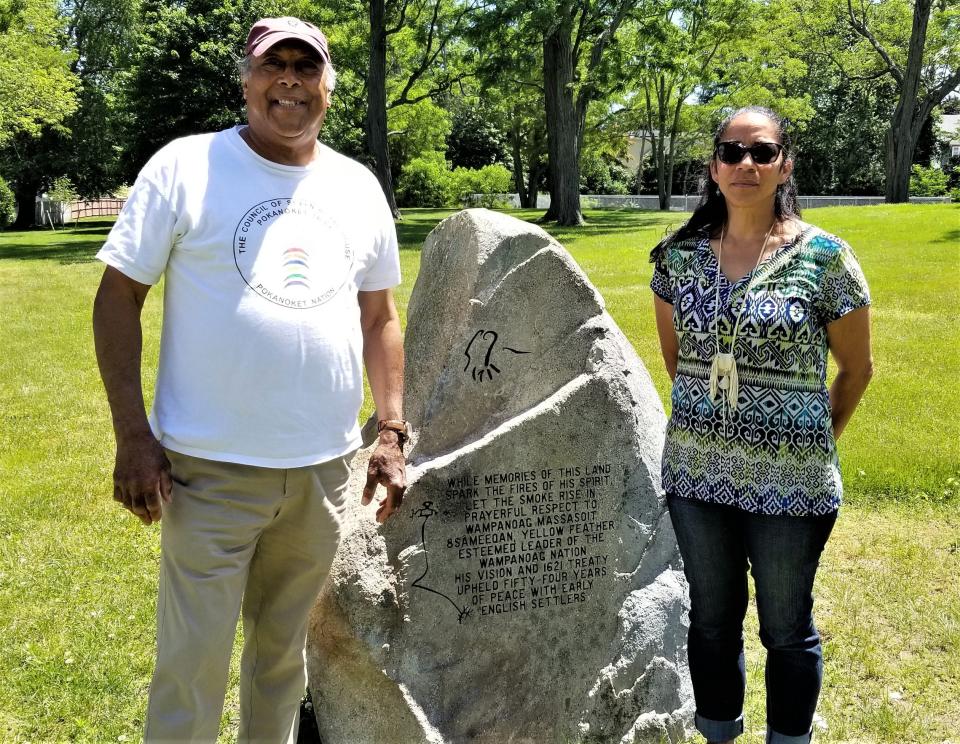
Location: 23 Haile St. Warren
Also known as Burr’s Hill, Pokanoket Burial Ground is a pre-Colonial burial site containing dozens of Indigenous graves. The cemetery was the site of frequent exploitation in the 1850s, with many graves being looted and destroyed in white settlers’ attempts to extract sand and gravel as materials for railroad construction. In 1913, the contents of the remaining 42 graves were exhumed and donated to Brown University and New York City’s Heye Museum of the American Indian by archaeologist Charles Carr. After the passage of the Native American Graves Protection and Repatriation Act of 1990, the Wampanoag Repatriation Confederation was able to retrieve the artifacts in 2017 and reinter them in their intended resting places — inside the graves they were stolen from.
Miantonomi Memorial Park
Location: 120 Hillside Ave., Newport
The hilltop of Miantonomi Memorial Park is the highest natural point in Newport. Once the seat of power for Narragansett Sachem Miantonomi, this hilltop park holds a history of Indigenous strength, guardianship and protection. The site was listed in the National Register of Historic Places in 1968 and remains a must-see for those interested in Indigenous history 55 years later today.
Ninigret Park
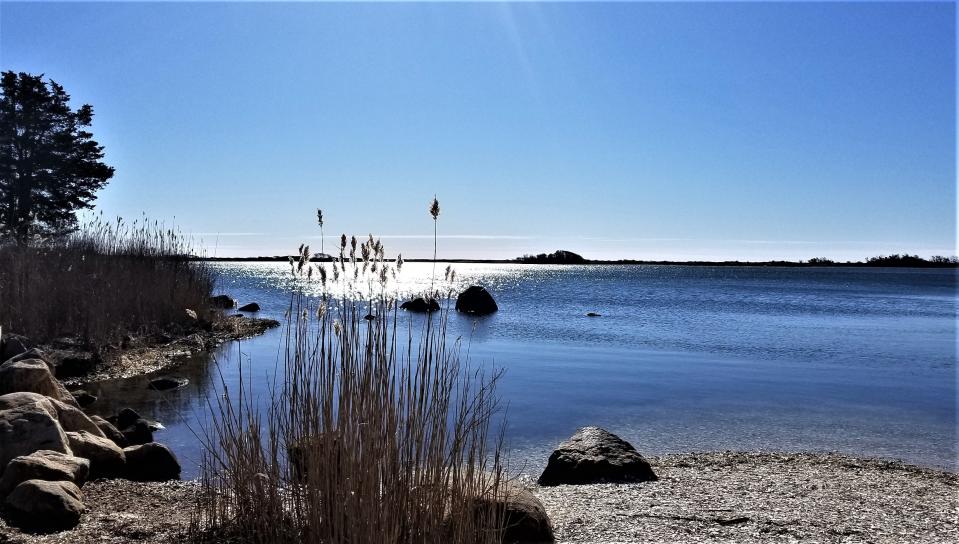
Location: 5 Park Lane, Charlestown
Named after Niantic Sachem Ninigret, Ninigret Park engulfs the perimeter of Ninigret Pond — the largest coastal salt pond in the state. Niantic people caught fish from the pond and built homes along the grassy shoreline, using the water’s vantage point for hunting and creating. Today, the park includes an observatory and nature center, a disc golf course and a naval airfield memorial alongside a playground and jungle gym for children. The pond remains as a reminder of Indigenous history and lifestyle.
This article originally appeared on The Providence Journal: 12 Rhode Island spots to learn about Indigenous culture

